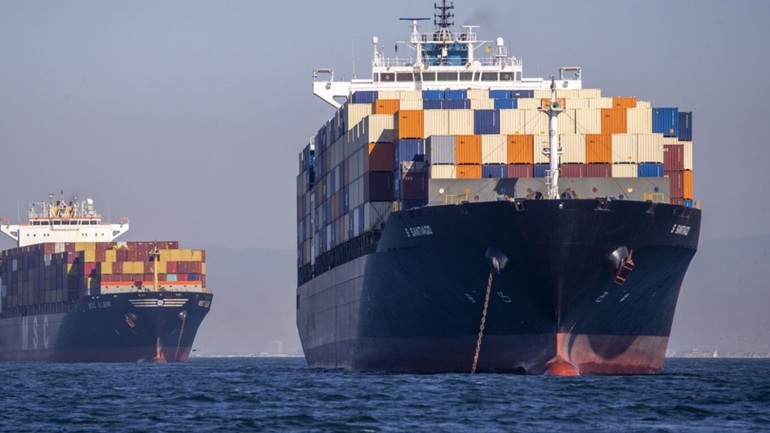 News
News
Mr. Yan Zhiyang - now a manager of a logistics company based in Guangdong, China - said that before the pandemic, a 20-foot container going from Shenzhen to Southeast Asia would cost about 100-200 USD. However, up to now, the price has increased 10 times, to about 1,000 - 2,000 USD.
"The cost of transportation to many different destinations always fluctuates continuously over time. Sometimes the export demand for a particular location suddenly increases, leading to an increase in freight rates as well. followed, and vice versa. However, in general, transportation costs have been pushed up dozens of times," said Mr. Yan.

Click to enlarge the photo
Sea freight rates from China to Southeast Asian countries have increased 10 times (Photo: SCMP).
According to the container shipping index, routes from the port of Ningbo (China) to Southeast Asia have shown a dizzying increase in freight rates over the past month and reached a record high. Specifically, freight costs to Thailand and Vietnam increased by 137% from the end of October to the first week of December, and 49% for the route to Singapore and Malaysia.
After all, rising fees and congestion are the consequences of the shift in consumption from services to goods, which has been happening since the early days of the pandemic.
Mr. Zhou Jie - Director of a transportation company in Dalian - said: "Transportation costs to Korea have also increased rapidly in the past two months. Normally, the rates for other routes are often high. at the beginning of the new year, but rates for routes to Korea have increased rapidly in the past 2 months, even reaching $1,600 for a 20-foot container (the most basic type of container used in shipping), much higher than the figure of 200 USD in normal times.
According to statistics from SWS Research, Southeast Asian countries have gradually reopened after the latest waves of the Covid-19 pandemic, and the rebuilding of operations in manufacturing plants has accelerated the demand for products. with raw materials.
Meanwhile, during the past quarter, many shipping companies have put more ships on trans-Pacific routes due to high demand during Black Friday or Christmas holidays, making it difficult to move passengers. with ships with short journeys in the past few months.
Wan Hai Lines, a Taiwanese shipping company specializing in routes to Southeast Asia, announced a new rate increase for a series of trips in December, according to local media reports.
Demand for routes into Asia is expected to increase sharply just before the new year. The reason is that the pandemic in Southeast Asia has somewhat subsided, and manufacturing plants have been reopened along with the Chinese domestic region, which has gradually recovered from the impact of the crisis.
But with demand continuing to rise, congestion is forecast to worsen at major Southeast Asian ports.
At the port of Tanjung Pelepas (Malaysia), container congestion continued to become severe throughout November, affecting the capacity of Southeast Asian ports to receive goods, according to Maersk.

Click to enlarge the photo
Container congestion continued to become severe throughout November (Image: SCMP).
Ocean freight rates for China-US trips have skyrocketed, surpassing the $20,000 mark for a 40-foot container in September, and have fallen and stabilized for the past few weeks.
However, this fee is still quite high when congestion at seaports is still bad, causing prices to be pushed up on all routes, according to statistics from the famous chartering platform Freightos.
This week, freight rates for the route from China to the US West Coast fell to about $14,924 per 40-foot container, equivalent to a 285% increase over the same period last year, according to the Freightos Baltic Index, 2021. The price for the Asia - West Coast US service was estimated at 17,195 USD, up 250% over the same period last year.
Judah Levine, Head of Research at Freightos, said: "High fees and congestion are the consequences of the shift in consumption from services to goods, which has been around since the early days. of the pandemic".
"The spread of the Omicron variant also has the potential to make the consumer trend back towards services and beyond," he said.
Hang Doan
According to the South China Morning Post